Overlanding the world has been a dream of mine for as long as I can remember. Initially, my dreams started out quite small and humble—biking through Europe. Then they morphed into motorbiking all across the USA. This dream, fed on a steady diet of Instagram feeds, blogs, and various magazines, grew to the point that I imagined my wife and I traversing the globe— not on a bike—but in a massive rig with multiple big-screen TVs, a fireplace, full kitchen, and sauna.
The reality, though, is we own a 30-year-old Suzuki Samurai, which if we went all out, would fit one medium-size TV and not much else.
In truth, as an overlanding machine, the Samurai’s only drawback is its size. Okay, maybe its lack of speed comes into play as well. But that’s not really a critical thing for overlanding. Apart from that minor detail, it is an awesome rig: it’s simple to fix and reliable; the parts are readily available on six continents; and it can be completely dismantled and put back together with a socket set, some duct tape, and a couple of screwdrivers. It also has a reasonable fuel economy. Oh, and an insane off-road ability that belies its small size.

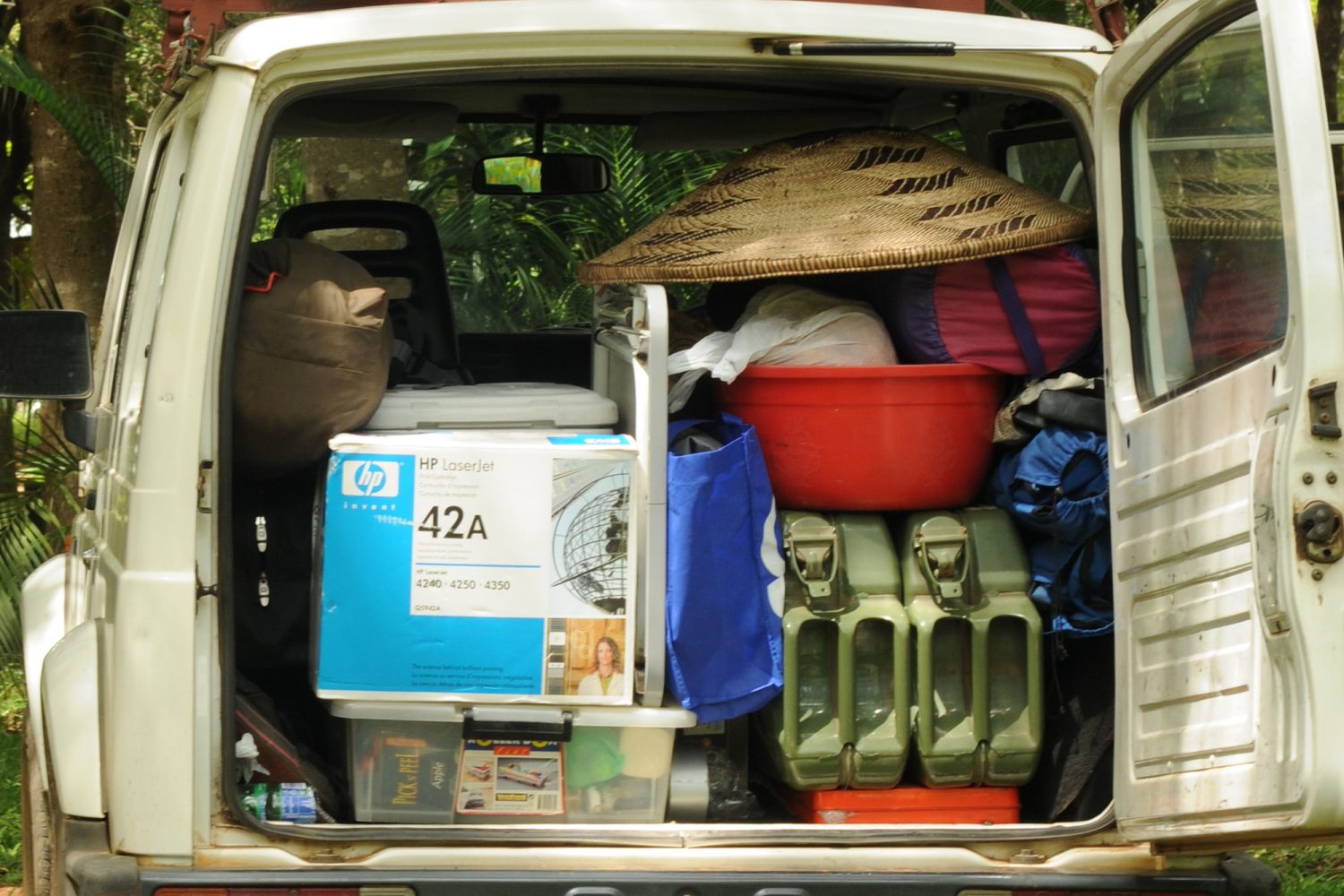
Having scaled the dream back somewhat, we thus threw some camping kit in the back of the Samurai (after taking the back seats out) and set off from our home in Nairobi, Kenya, for the 7,000-kilometer (4,200-mile) trip to Victoria Falls in Zambia.
The reliable Samurai took us through the vastness that is Tanzania, to the small and beautiful “warm heart of Africa” that is Malawi, before landing us at the Zambian border. We had incredible experiences along the way, but we have no time to relate these now—onward to the falls.
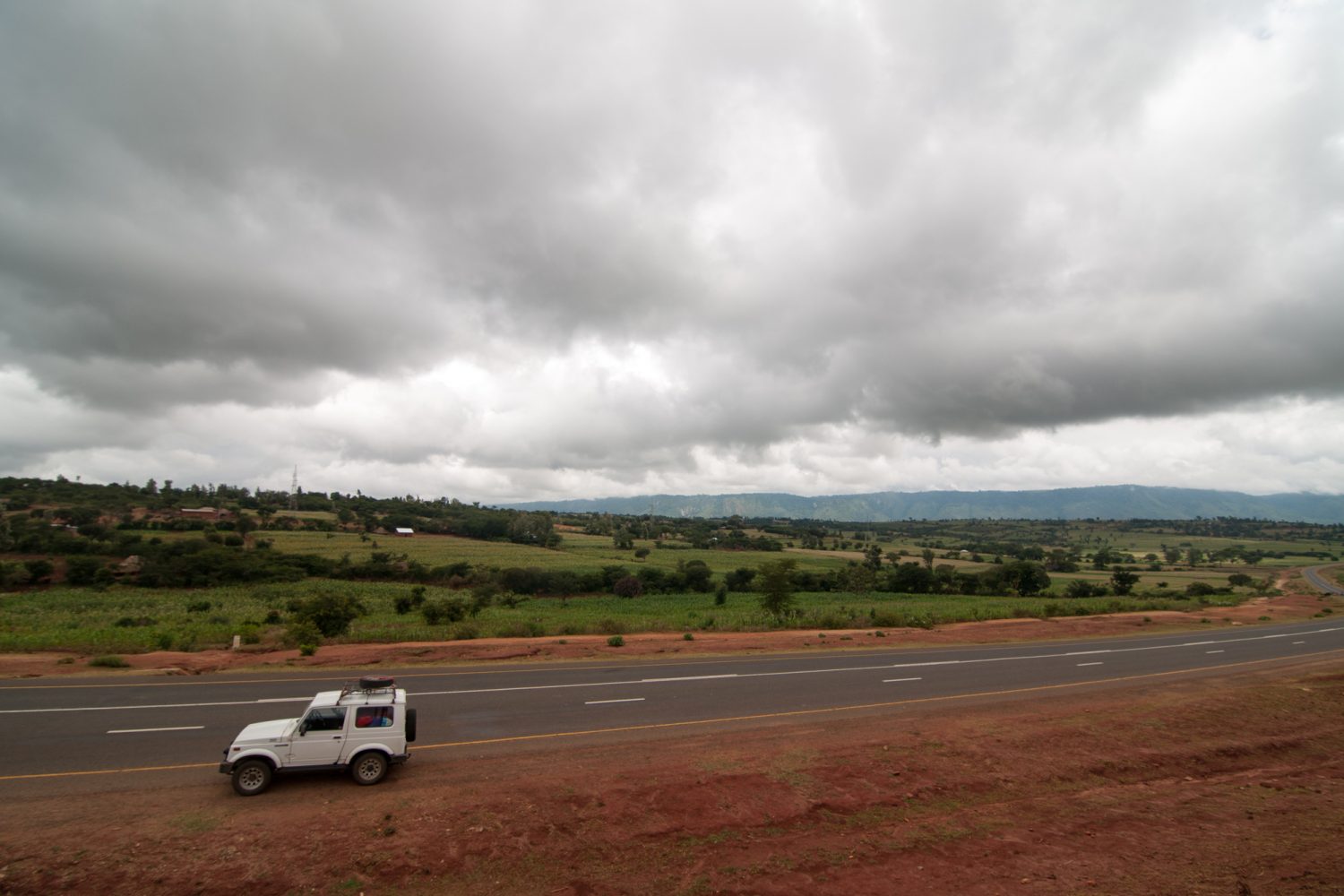
Zambia has some of the most incredible sights—from untouched game reserves teeming with animals to great rivers and thundering waterfalls. However, at that time, due to road construction, it just took forever to get around the country. For instance, it took us 14 hours from the border to the capital city of Lusaka (with only a brief incident that involved an armed soldier and an explanation that taking a photo would not pose a threat to national security).
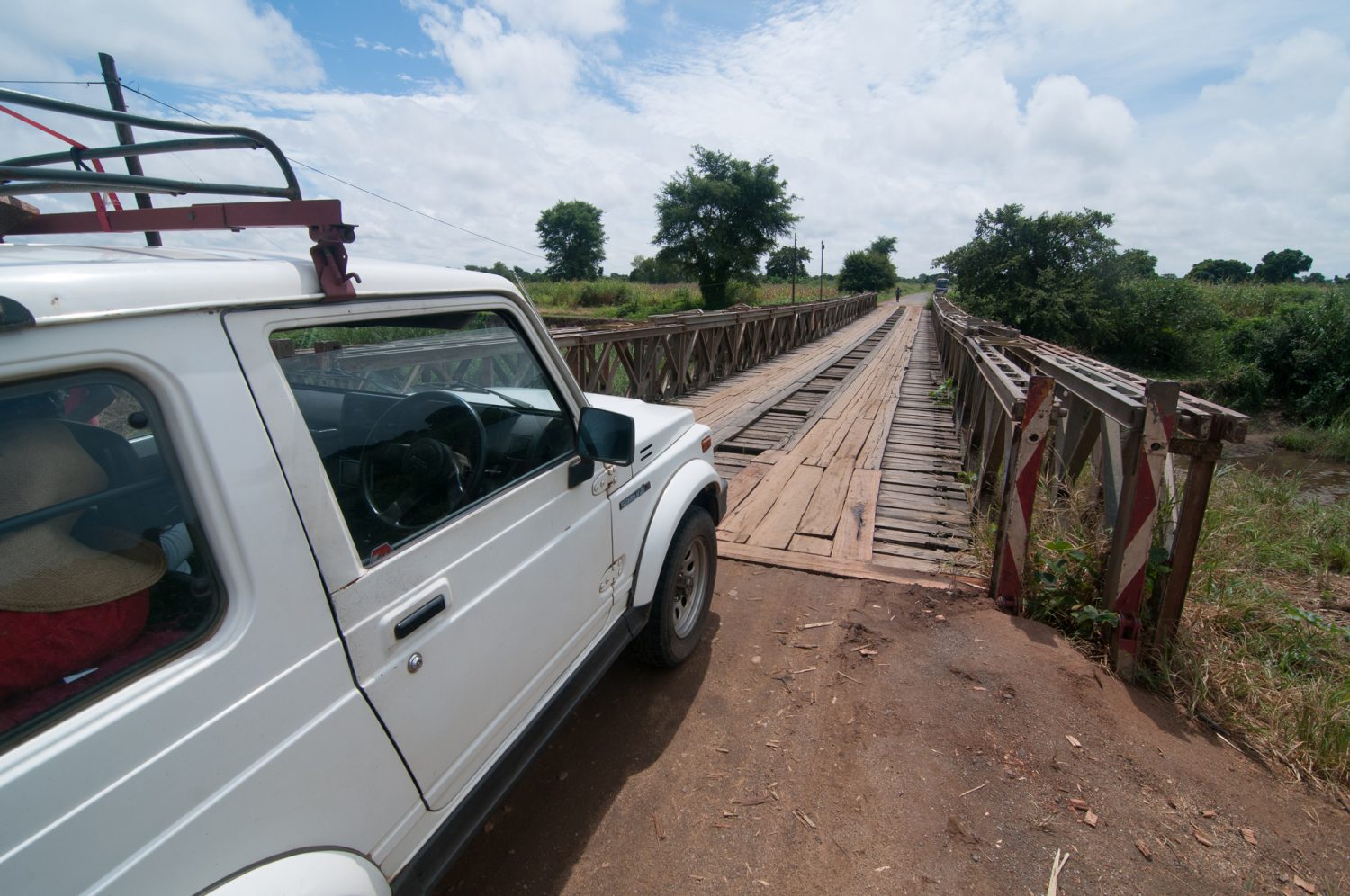
Pumped after a restful night, we set off the next day for the final destination of our trip. As is our habit, we got on the road relatively early, but it is a long drive (nothing at all to do with the Samurai’s speed abilities) from Lusaka to Livingstone. We rolled into town around 4:00 p.m. with only another brief incident, this time involving a policeman, a request for a trucking “permit,” and a serendipitous meeting with the Kenyan high commissioner to Zambia, who saved the day.
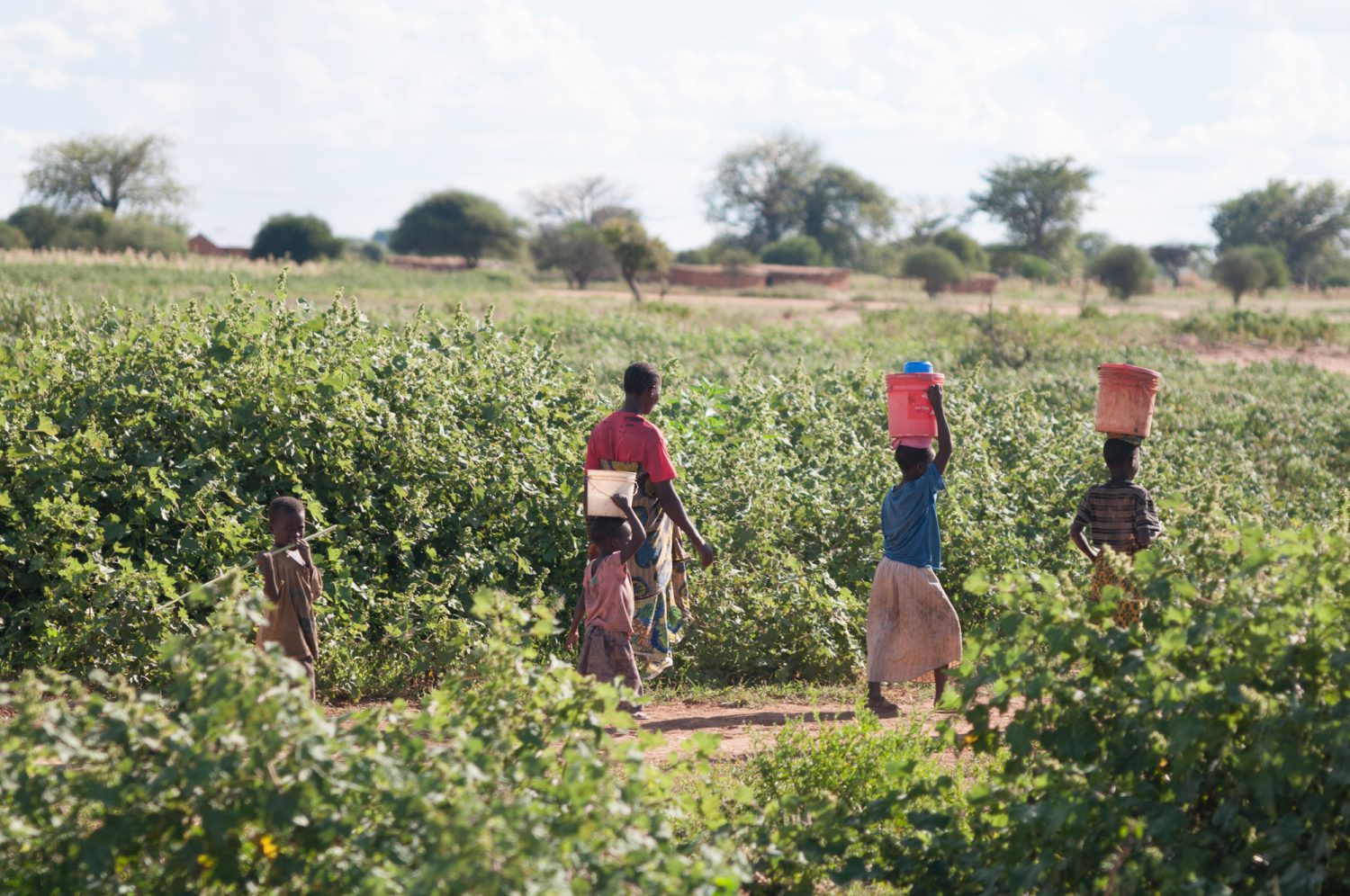
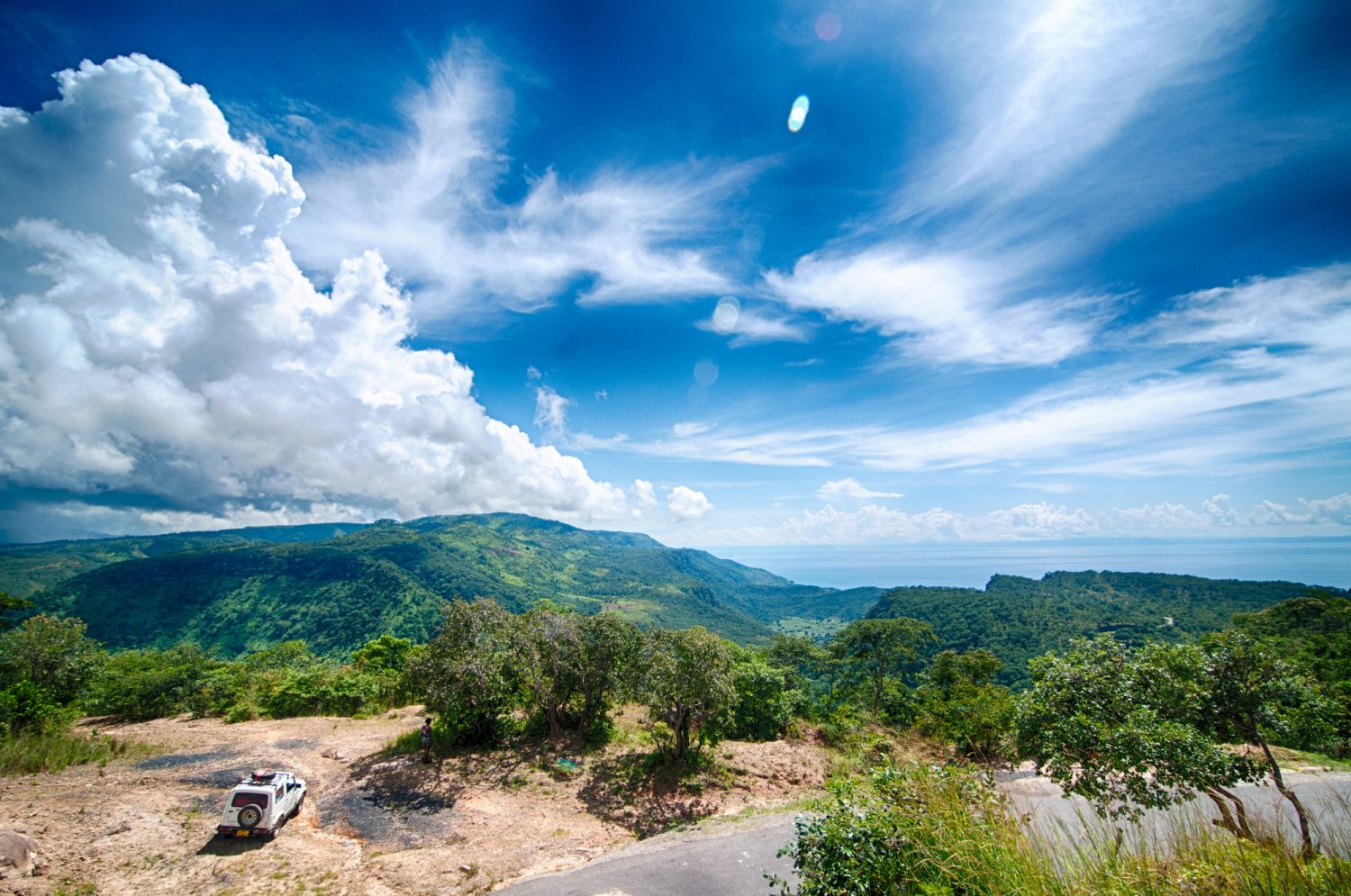
Finally! Livingstone. How else to celebrate this point of our epic trip but to have a well-deserved drink at a pretty little restaurant. We stretched our cramped legs and walked about the town for a bit. Evidently, its raison d’etre is a tourist town. But unlike big tourist towns like Niagara Falls that are highly commercialized, Livingstone has a great laid-back vibe, as though one of the world’s greatest attractions was not lying in their backyard.
After wandering around the charming little town, we decided to pop down to the falls that very day to plot our assault for the next day. Victoria Falls lies on the border between Zambia and Zimbabwe, and one of the best places to view them is on the bridge. However, one has to pass through immigration to get to the said bridge. To show you how relaxed the immigration officials were, even though we didn’t have our passports on us, they waved us through casually to go “have a look.”
We enjoyed “illegal immigrant” status for a few minutes. Because it is an official border crossing and a main road, every few minutes, a huge truck loaded with copper would roll across the bridge and cause it to shake and shudder. It is a 128-meter drop to the river below, so this is just a bit worrying. The bridge was built in 1905 under Cecil Rhodes’ vision, who apparently gave specific instructions that it should be located where the spray from the falls would fall on the trains passing. While Rhodes’ legacy for Africa is riddled with questionable ethics and business practices, his choice of location for the bridge was perfect.
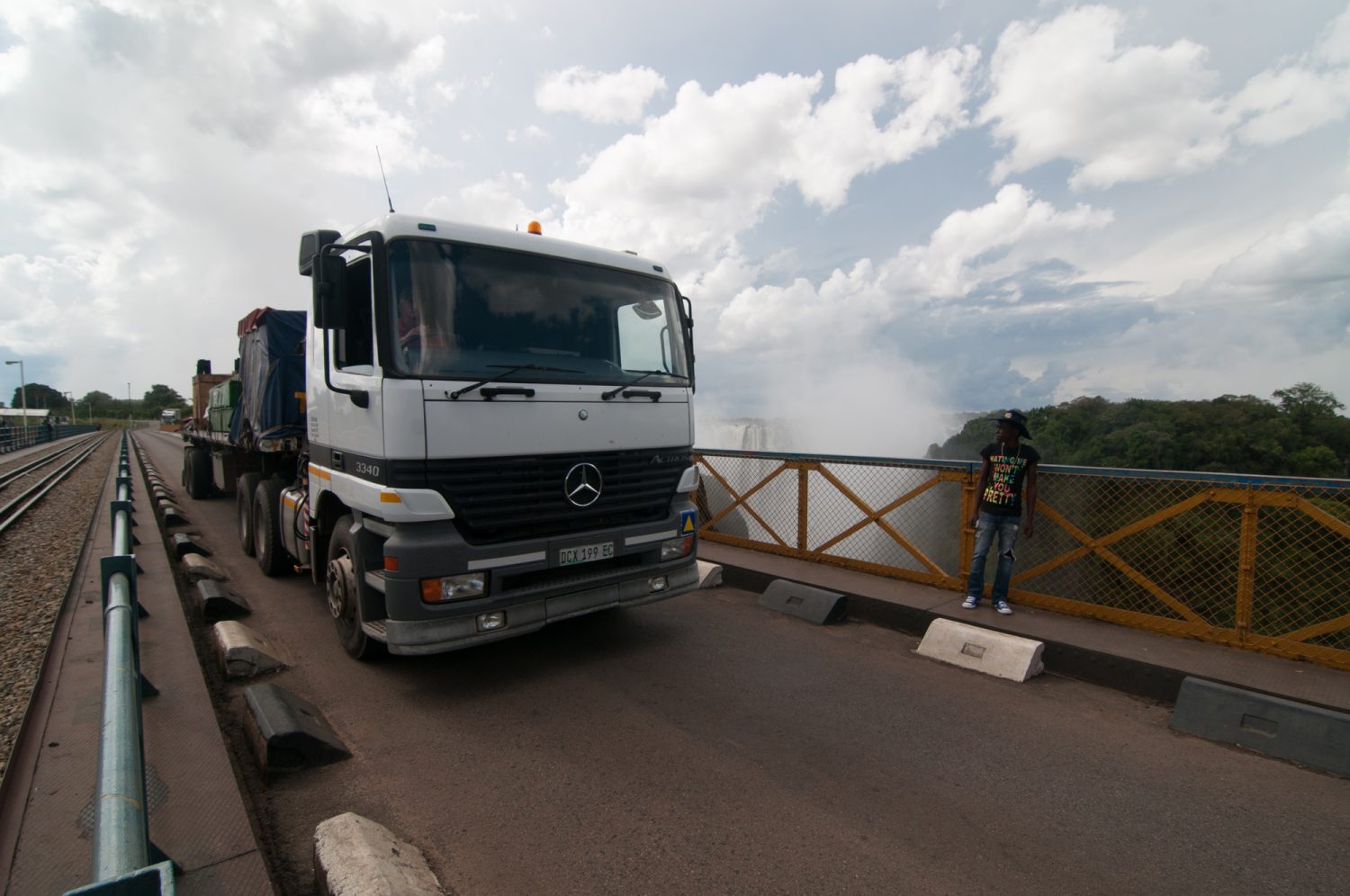
The 19th-century British explorers were an incredibly hardy lot. Modern overlanders are not even in the same galaxy with these guys. They braved sickness, hostile indigenous people, dangerous animals, swamps, rivers, forests, and deserts. However, in spite of their many abilities, they were sadly lacking in one key area: imagination in naming places.
Local: “Let me show you the largest lake you have ever seen.”
John Speke: “Jolly good show. That is utterly incredible. So incredible, in fact, I shall name it Lake Victoria.
Local: “Let me show you the most amazing thing you have ever seen in your life.”
Livingstone: “I say, old chap, that is indeed mind-blowing. I am so mind-blown, I shall name it Victoria Falls.
The locals already had a perfectly good name for the falls, Mosi-oa-Tunya or the “Smoke Which Thunders.” That’s more than a good name; it’s an undeniably cool and apt name.
Some famous places are hyped up so much that the reality doesn’t quite live up to the expectation. There was a part of my mind that was prepared for this eventuality. However, in the case of Mosi-oa-Tunya, it is just not possible to hype it up too much. The water thunders and cascades, spraying a sheet of rain that comes back up about 500 meters. In comparison, the falls themselves are 108 meters in height. It is hard to describe in words, so you will just have to plan a trip there at least once in your lifetime, preferably overland.
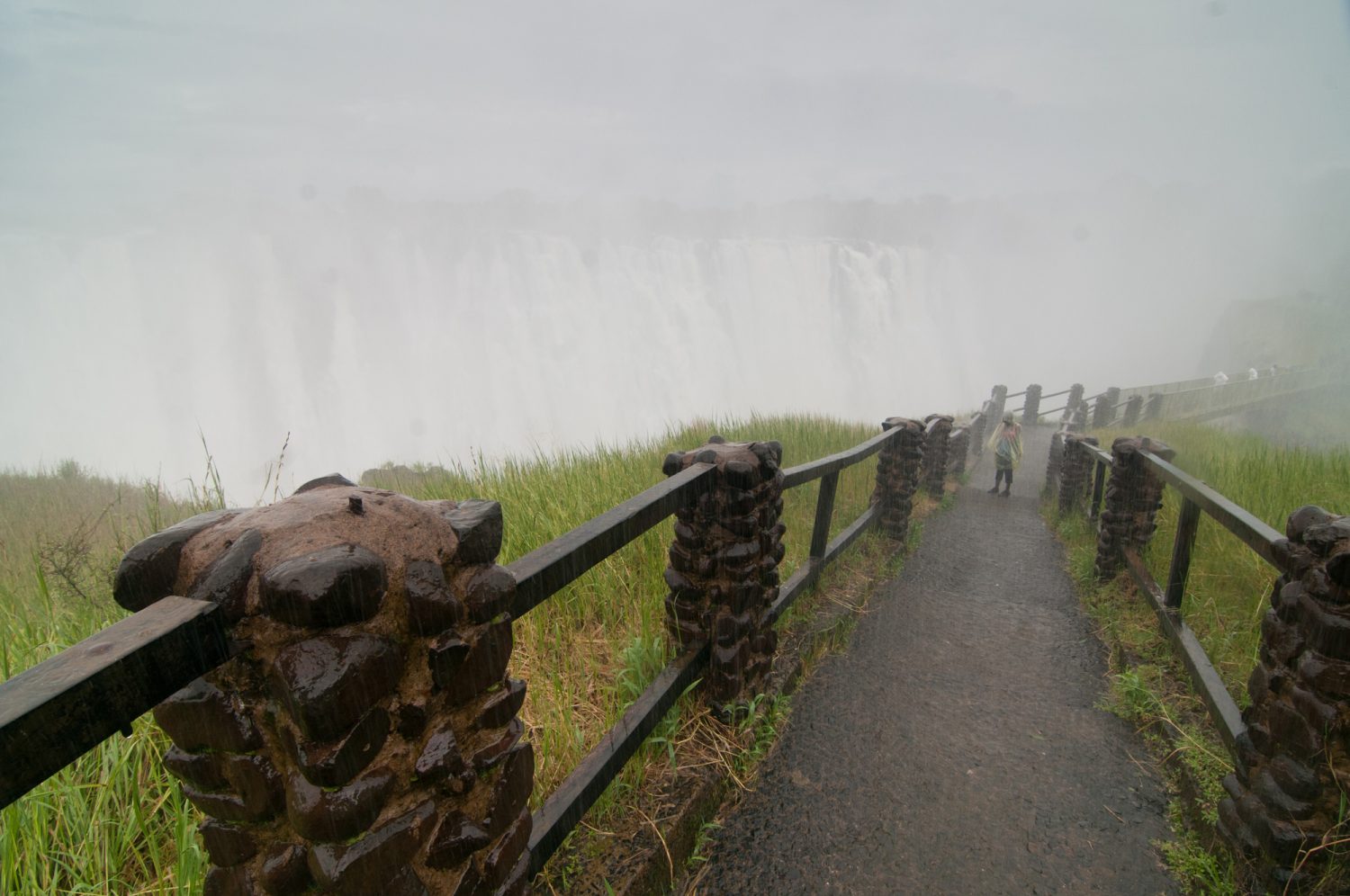
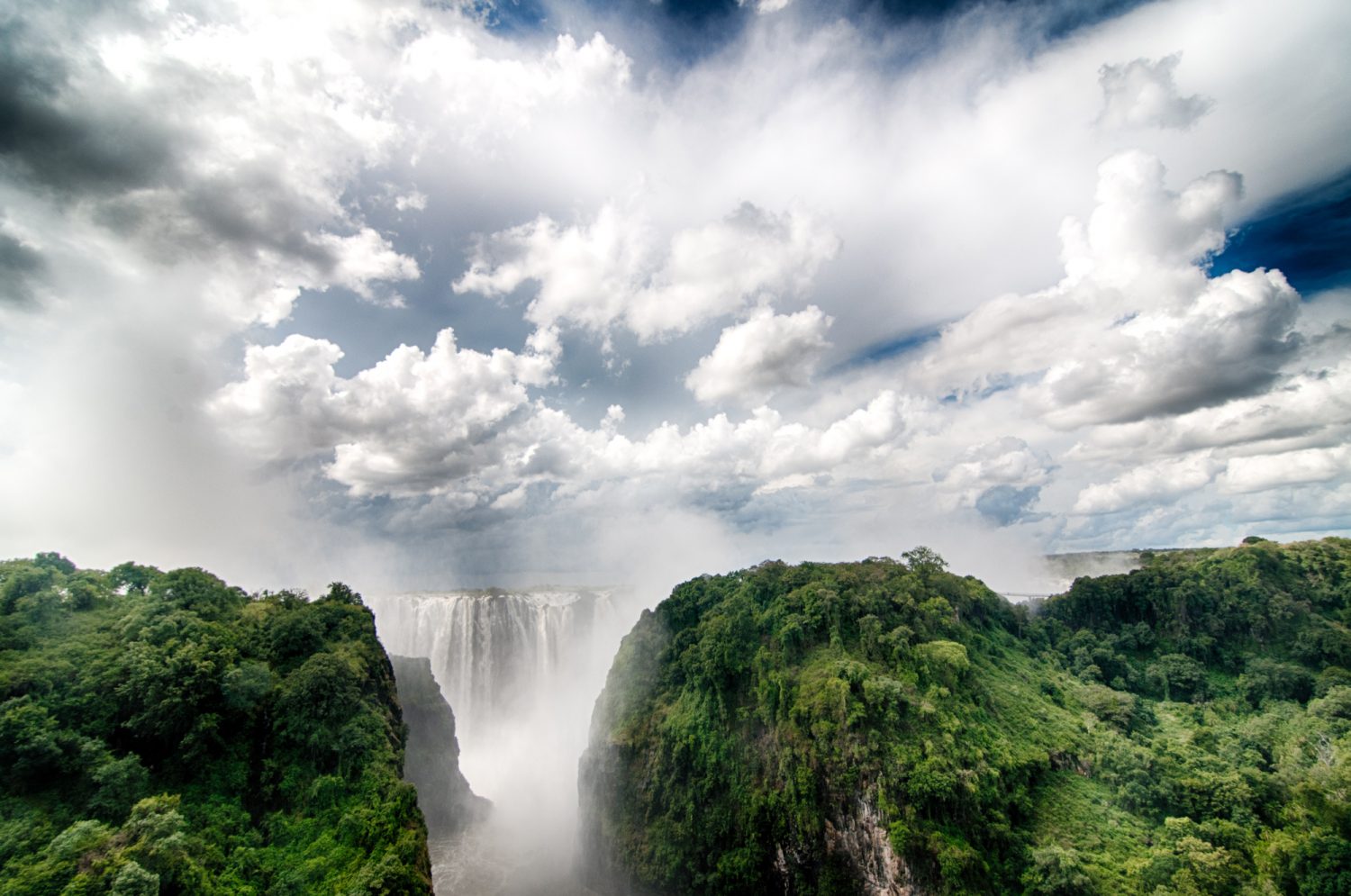
Mosi-oa-Tunya Falls are not the widest or even the tallest falls in the world. However, because they are both very wide (1.7 kilometers, about 1 mile) and tall (108 meters, 360 feet), it has the largest curtain of falling water in the world. The flow varies considerably between the rainy and dry seasons, but the highest recorded flow was 12,800 tons of water. This is not per day or hour you see, but per second. In fact, the only regret I have after spending the following day exploring the falls was buying a $1 plastic raincoat. After about 10 seconds, I was soaked to the bone.
A short distance from the upper level of the Zambezi River (that feeds the falls), there is a beautiful, though steep, hike down through a lush green forest that takes you to the bottom. There is a pretty little riverlet that gushes along the trail. Once you get to the very bottom, you arrive at a huge swirling pool by the river’s edge framed by the forest. From the “boiling pot,” you have a fantastic vantage point to watch the bungee jumpers throwing themselves off the bridge.
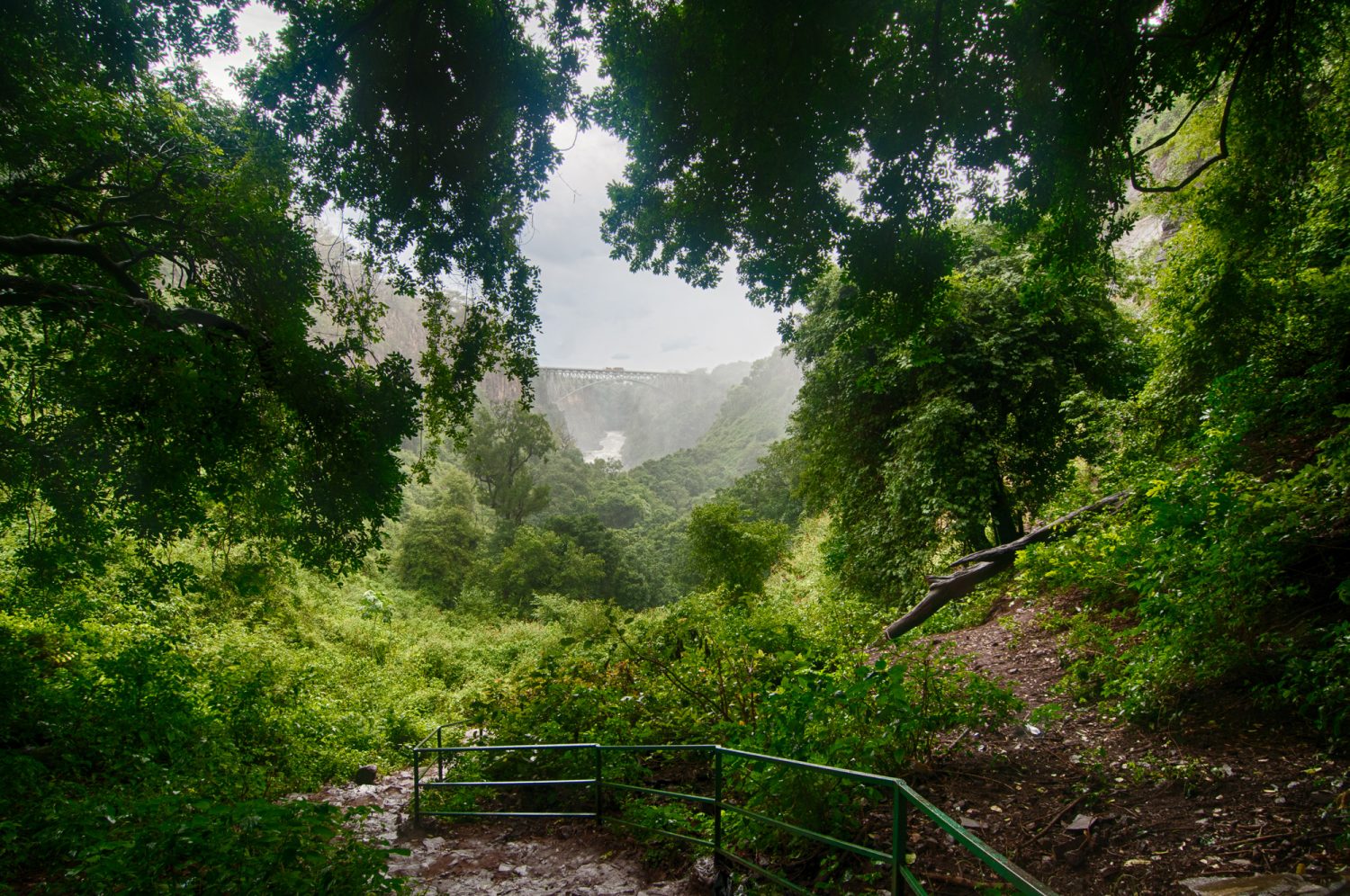
The hike back up is a lot tougher than going down. But we enjoy a final spectacular treat. Back up by the edge of the massive Zambezi River, we watch a stunning African sunset as the river flows inexorably over the edge as it has done for millennia.

Even the usually staid David Livingstone waxed lyrical on viewing the falls: “No one can imagine the beauty of the view from anything witnessed in England. It had never been seen before by European eyes; but scenes so lovely must have been gazed upon by angels in their flight.”


